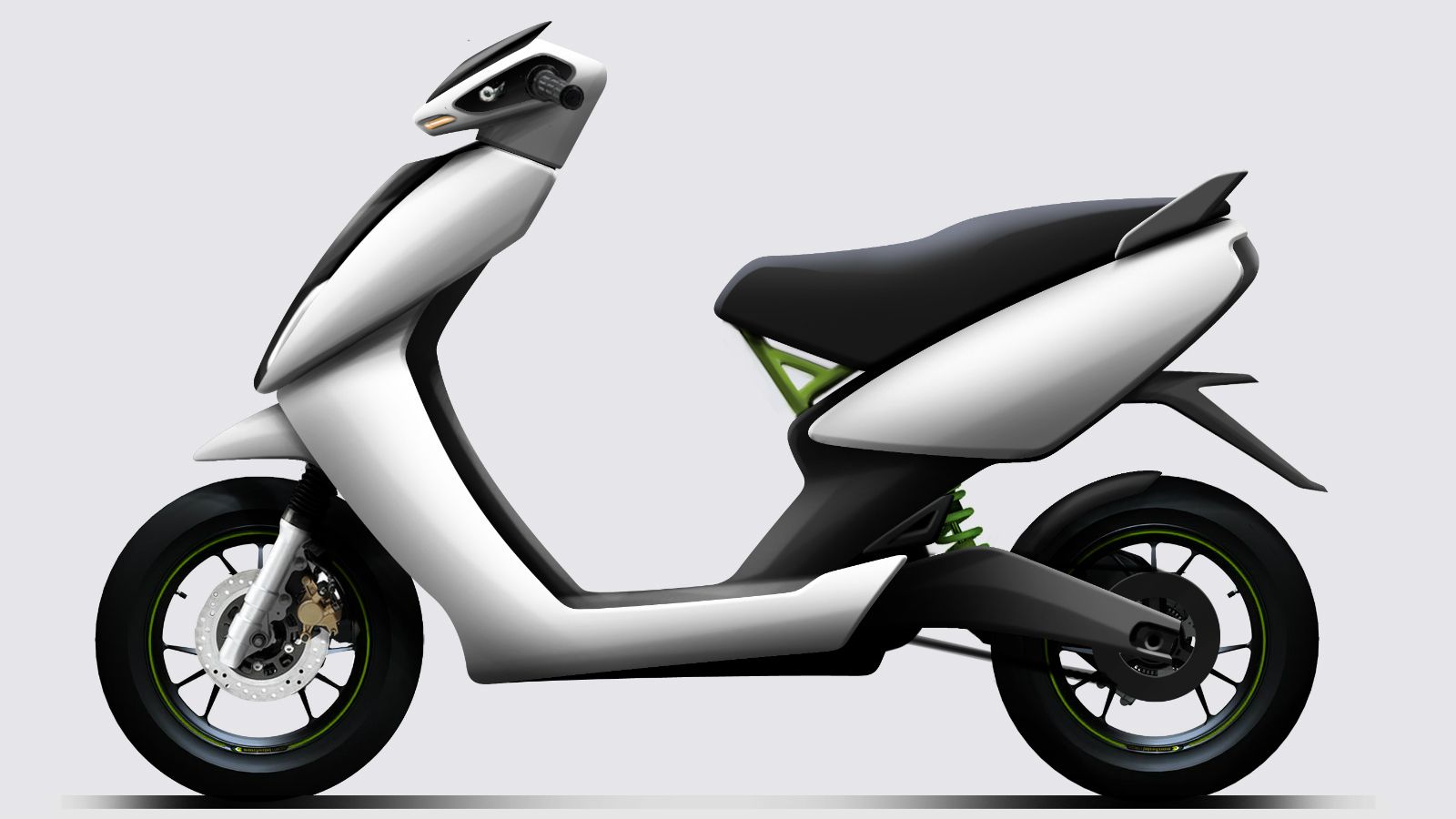
Transport options for the last mile. See below for the rules applying to different devices. Maybe it would be easier to just set a 10km per hour limit on shared paths and a 20km per hour speed limit on dedicated bicycle paths?
 Summarised:
Summarised:
Scooters – foot or motorised scooters of up to 200Watts and max speed 10km/h can be used on footpaths, (presumably also shared paths), but not separate bicycle paths (too slow for the bikes?). They can be used on local roads up to a speed limit of 50km/h (not too slow for cars!).
If a motorised scooter has >200Watts of power and can exceed 10km/h it is classed as a motor vehicle and can only be used on the road if it is registered and the rider has a motorcycle licence or learner permit. (under 200Watts and 10km/h are too slow for bike lanes but over 200Watts and >10km speed capability are not able to use dedicated bicycle lanes).
Motorised skateboards, roller skates or roller blades cannot be used on public roads or footpaths. Only private property. Surely the motorised skateboard of under 200Watts is the same as a scooter?
Motorised bicycle – standard bicycle road rules apply to a power assisted bicycle up to 200Watts or a Pedalec (up to 250Watts and 25km/h but requires pedalling in conjunction with the motor). A such these type of power assisted bicycles can operate on dedicated and shared bicycle paths. Outside of these classifications the motorised bicycle is considered a motorbike.
Scooters & wheeled recreational devices
From the VicRoads website:
Wheeled recreational devices include:
- scooters (foot or motorised with an output of <200 Watts)
- skateboards
- roller blades
- roller skates.
Wheeled recreational devices don’t include:
- bicycles
- scooters that are a motor vehicle (a motor with an output of 200 Watts or more).
- golf buggies
- wheelchairs (see our Pedestrians page)
- wheeled toys
Wheeled recreational devices cannot be:
- used on separated bicycle paths, but can be used on footpaths
- used on roads with dividing lines or median strips
- used on roads with a speed limit of more than 50 km per hour
- used on the road at night, except to cross the road, e.g. at an intersection. This rule does not apply to scooters provided other rules for scooters are followed
- towed or used in the slipstream of another vehicle
- used where there is a ‘No Wheeled Recreational Devices or Toys’ sign.
You are not allowed to use motorised skateboards, roller skates or roller blades on public roads, footpaths or nature strips. But, you can use these on private property.
A foot scooter:
- has two or three wheels
- has a footboard between the front and back wheels
- is steered by handlebars
- may or may not have a seat
- is moved by pushing one foot against the ground.
A motorised scooter:
- has the same features as a foot scooter
- is moved by pushing one foot against the ground, by an electric motor, or by a combination of both
- has an electric motor with a maximum power output of 200 watts or fewer
- is not able to travel faster than 10 km/h when ridden on level ground.
A motorised scooter is classed as a motor vehicle if it:
- is powered by a petrol motor
- has a maximum power of more than 200 watts
- can go faster than 10 km/h
If your motorised scooter is classed as a motor vehicle it can only be used on the road if it is registered and the rider has a motorcycle licence or learner permit. It can be used on private property.
Bicycles
From the VicRoads A-Z of Road Rules bicycles link
A bicycle (or bike) is defined as a vehicle that:
- has two or more wheels
- is moved by human power through a belt, chain or gears.
This definition includes:
- pedicabs
- penny farthings
- tricycles
- power-assisted bicycles.
A power-assisted bicycle uses pedals as its main source of power, just like a bicycle, but it has a motor as well.
Standard bicycle road rules apply to power-assisted bicycles.
Power Assisted Bicycles
From the VicRoads Power assisted bicycles page.

Power assisted bicycles are likely to have similar performance characteristics to pedal powered bicycles so the same road rules apply. These types of power assisted bicycles are not required to be registered nor the rider required to be licensed.
A power assisted bicycle is identical to a pedal powered bicycle, except it has an auxiliary motor. Power assisted bicycles have two definitions in Victoria:
- A pedal cycle with one or more auxiliary propulsion motors attached which has a combined maximum power output not exceeding 200 watts.
- A bicycle certified as a Pedalec (compliant with European Committee for Standardization EN 15194:2009 or EN 15194:2009+A1:2011 Cycles – Electrically power assisted cycles – EPAC Bicycles). This bicycle features an auxiliary power producing no more than 250 watts and specifies this as a continuous rating. It also restricts the top power assisted speed to 25 kilometres per hour and requires the rider to pedal to access the power.
A motorised bicycle is not classed as a bicycle if:
- the motor is not an auxiliary source of power (a person must still be able to propel the bicycle via pedals without the motor operating).
- the motor’s power output exceeds 200 watts (whether or not the motor is operating), unless certified as Pedalec.
These are considered to be motorcycles. The rider will be required to hold a motorcycle licence and have the vehicle registered before it can be used on the road network. Motorcycles cannot be ridden on footpaths or bicycle paths. Motorcycle riders must wear an approved motorcycle helmet.
What is a Pedalec?
A Pedalec is a type of power assisted bicycle equipped with one or more auxiliary propulsion motors. It allows a maximum power of 250 watts, with a safeguard allowing for power assistance only when the bicycle is travelling at less than 25km/h and the rider is pedaling. This means that the rider must pedal to obtain help from the auxiliary motor(s) and cannot simply be propelled by the motor alone. Note: The motor may operate without the rider pedaling up to a speed of 6km/h.
A Pedalec bicycle is a safe alternative mode of transport to a manual bicycle or passenger car. A Pedalec has power assistance that allows a bicycle rider to travel further and ride with less effort.

Changes to road rules for Pedalec riders
In September 2012 the Minister for Public Transport and Roads, Terry Mulder MP, announced a change to the Victorian Road Rules to allow a Pedalec to be used as a bicycle in Victoria. Rules in other Australian jurisdictions may differ. We advise that riders check with the relevant road authority before travelling interstate.
The primary objective of the change is to provide increased options of transport for road users. Other benefits of the change include:
- capitalising on new technology and allowing more options of power assisted pedal cycles while maintaining safety requirements
- responding to demands from the community
- encouraging more road users to cycle as a form of sustainable transport
- bringing Victoria into line with regulations of jurisdictions around the world
- better identifying power assisted bicycles with a clear plate marking.
Bicycle paths
You don’t have to use an off-road bicycle path, separated footpaths or shared paths (if there is one) when riding a bike. You can choose to ride on the road instead if you wish.
Riding on a footpath or shared path
You can ride on a footpath if you:
- are a child under the age of 12
- are an adult supervising a child under the age of 12
- have been given and are following the conditions on a medical certificate that says you have a disability that makes it difficult for you to ride on the road. You need to follow the conditions on your medical certificate and show it to a police officer or authorised person when asked.
When riding on footpaths and shared paths, cyclists need to:
- Keep to the left on footpaths and shared paths (unless impractical to do so)
- give way to pedestrians



